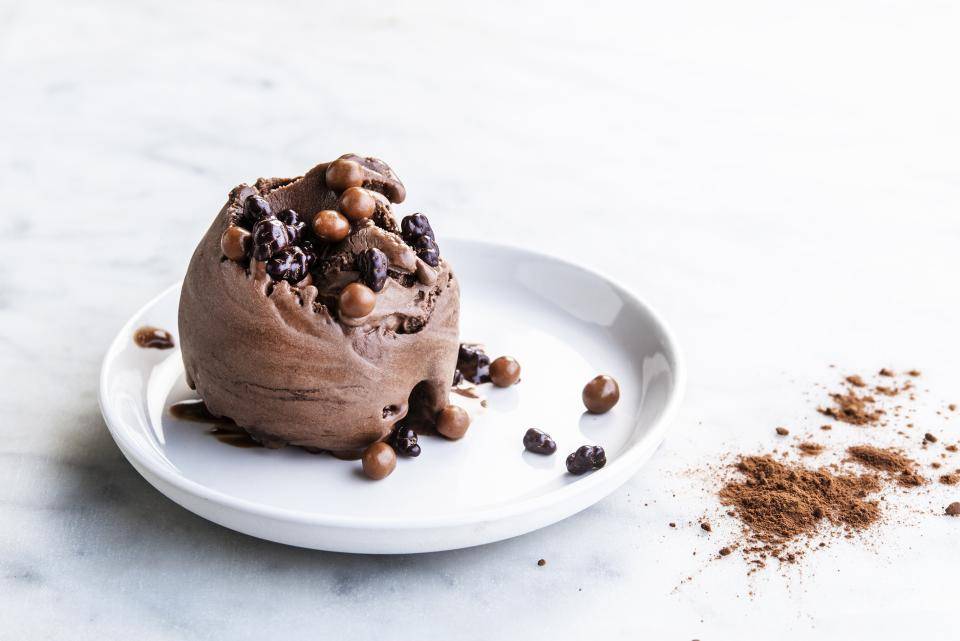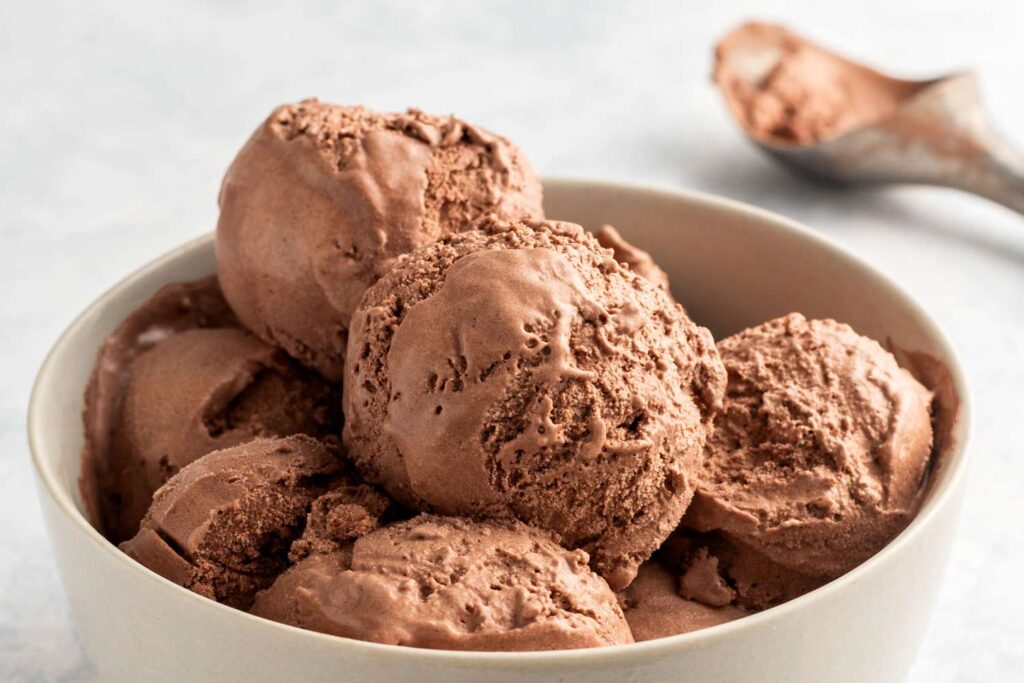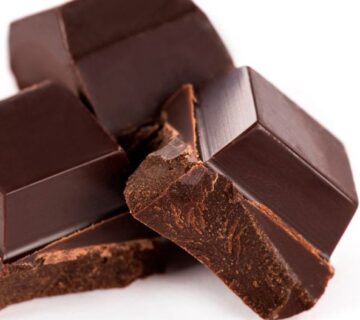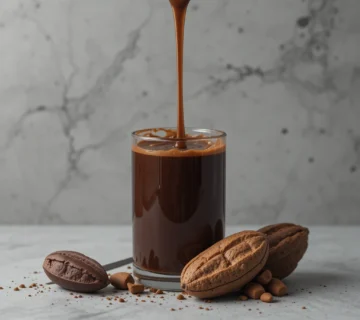Walk into any modern ice cream production facility in Iraq—whether in Baghdad, Basra, or Erbil—and the unmistakable aroma of chocolate isn’t just about indulgence; it’s about quality, consistency, and production efficiency. For industrial ice cream plants, the choice of cocoa powder dictates everything from flavor depth and color richness to smoothness and batch-to-batch uniformity.
Sourcing high-quality cocoa powder in bulk has become a strategic priority for Iraqi ice cream manufacturers as they scale up operations to meet growing domestic demand. In this article, we dive into everything a factory manager, procurement officer, or production supervisor needs to know about cocoa powder for ice cream—from types, technical benefits, pitfalls in procurement, to actionable advice for choosing the right supplier like MT Royal, with premium options such as Latamarko.
Understanding Cocoa Powder for Ice Cream Production
Cocoa Powder Basics
Cocoa powder is the dry, finely ground solids remaining after extracting cocoa butter from cacao beans. In industrial ice cream production, cocoa powder serves multiple roles:
- Flavor Enhancer: Adds rich chocolate notes without excess fat.
- Color Agent: Provides deep brown tones that appeal to consumers.
- Functional Ingredient: Interacts with milk, cream, stabilizers, and emulsifiers for ideal ice cream texture.
There are two primary types of cocoa powder relevant to ice cream manufacturing:
- Natural Cocoa Powder – Slightly acidic, light to medium brown, sharp chocolate flavor. Best for recipes where acidity complements other ingredients.
- Alkalized (Dutch-Processed) Cocoa Powder – Neutralized with alkali to produce darker color, smoother flavor, and improved solubility in cold or hot mixtures.
For ice cream factories, the choice between natural and alkalized cocoa depends on desired flavor profile, color intensity, and mixing efficiency.
Why Quality Cocoa Powder Matters in Iraqi Ice Cream Factories
1. Flavor Consistency
Industrial ice cream production demands flavor stability across thousands of liters per batch. Inconsistent cocoa quality can result in bitterness, off-flavors, or muted chocolate notes—directly impacting customer satisfaction.
Reliable suppliers like MT Royal ensure consistent flavor profiles, allowing production teams to maintain uniformity even across high-volume runs.
2. Color and Visual Appeal
Ice cream is a visual product. Consumers often judge chocolate ice cream by its rich, dark hue. Alkalized cocoa powders, particularly premium European options like Latamarko, deliver consistent color that withstands processing temperatures and mixing without darkening or fading.
3. Mixing and Solubility
Unlike baked goods, ice cream involves cold emulsions, making cocoa powder solubility critical. Poorly dispersed cocoa leads to streaks, lumps, and uneven flavor distribution. High-quality powders blend seamlessly with dairy bases, stabilizers, and sugar.
Applications of Cocoa Powder in Ice Cream
Industrial cocoa powders are highly versatile in frozen dessert production. Common applications include:
- Chocolate Ice Cream Bases: Provides rich chocolate flavor without excessive fat.
- Swirls and Mix-Ins: For fudge, caramel, or nut inclusions requiring stable color and taste.
- Soft Serve Products: Ensures smooth, consistent chocolate intensity in high-throughput machines.
- Ready-to-Mix Ice Cream Powders: For export or retail, where cocoa must dissolve evenly.
In our experience supplying manufacturers across Iraq, cocoa powder can define the difference between a standard product and a premium ice cream that commands a higher price point.
Technical Considerations for Industrial Ice Cream Production
Fat Content
Ice cream formulas typically include cocoa powder at 10–12% fat. Lower fat content reduces richness, while higher fat can interfere with stabilizer action. Factories must select powders appropriate for their base formulation.
pH and Acidity
Alkalized cocoa powders have a neutral pH (6.8–8.1), improving compatibility with dairy proteins and stabilizers. Natural cocoa’s acidity can react with sodium bicarbonate or other ingredients, affecting texture and overrun.
Particle Size
Fine, uniform particle size ensures smooth mouthfeel and prevents grittiness, especially in soft-serve machines or premium gelato production.
Solubility
Cocoa must disperse completely in cold and hot mixtures to prevent streaking and clumping. Dutch-processed powders generally perform better in industrial settings for this reason.
Choosing the Right Supplier in Iraq
Why Supplier Reliability Matters
Iraqi ice cream plants face unique challenges:
- Logistics and import delays
- Seasonal variations in cocoa availability
- Batch-to-batch quality variation
Choosing a trusted supplier like MT Royal ensures:
- Consistent stock availability for uninterrupted production
- Technical support for formulation and recipe adaptation
- Quality assurance with Certificates of Analysis for each batch
Premium Options
While standard industrial cocoa powders serve most recipes, premium European brands like Latamarko provide enhanced color, flavor stability, and process resilience—ideal for artisanal or high-margin ice cream lines.
Common Pitfalls in Cocoa Powder Procurement
- Overemphasizing Price: Low-cost powders may compromise flavor, solubility, and color, leading to higher waste and lower customer satisfaction.
- Ignoring Technical Data: Fat percentage, pH, and moisture content must be verified for large-scale production.
- Neglecting Batch Testing: Without testing, subtle differences between lots can impact product quality and consistency.
We’ve seen factories in Iraq improve their ice cream overrun, color, and taste simply by switching to high-stability cocoa powders supplied by MT Royal, illustrating that ingredient selection is a critical operational decision.
Tips for Optimizing Cocoa Use in Ice Cream
- Pre-sift powders before mixing to prevent clumps
- Blend cocoa with sugar to enhance dispersibility in cold bases
- Monitor storage conditions—cocoa powder is hygroscopic and must be kept dry
- Run small pilot batches before full-scale production to confirm taste, color, and texture
Industry Trends in Iraqi Ice Cream Manufacturing
- Premiumization: Consumers are gravitating toward artisanal, indulgent chocolate flavors, driving demand for high-quality cocoa powders.
- Clean Label Demand: Natural ingredients without additives are increasingly preferred.
- Supply Chain Resilience: Manufacturers prioritize suppliers with proven import and quality control processes to avoid production delays.
Latamarko, with its Spanish engineering and sustainable sourcing, exemplifies these trends by providing powders with excellent flavor stability, natural color, and batch consistency.
Case Study: Basra Ice Cream Plant
A medium-scale ice cream facility in Basra struggled with streaked chocolate soft-serve due to inconsistent cocoa dispersibility. After switching to Dutch-processed cocoa from MT Royal, the plant achieved:
- Uniform chocolate color across all machines
- Smoother texture with no graininess
- Higher customer satisfaction and repeat orders
This underscores the importance of pairing high-quality cocoa powder with expert supply and technical support.
Frequently Asked Questions
1. Which cocoa powder is best for industrial ice cream?
Alkalized cocoa powders are generally preferred for color consistency, smooth flavor, and solubility. Natural cocoa works in recipes that tolerate acidity.
2. Can cocoa powder affect ice cream overrun?
Yes. Particle size and fat content can influence air incorporation, affecting texture and volume.
3. How should cocoa powder be stored?
Keep in a cool, dry, airtight environment to prevent moisture absorption and clumping.
4. Why is supplier consistency critical?
Batch-to-batch variation can impact taste, color, and texture, leading to production inefficiencies and customer complaints.
5. Are European brands like Latamarko worth the investment?
For premium product lines, yes—they offer unmatched flavor stability, color uniformity, and technical reliability.
Conclusion: Cocoa Powder as a Strategic Ingredient
In Iraq’s ice cream industry, cocoa powder is more than a flavor component—it’s a strategic ingredient influencing product quality, customer satisfaction, and operational efficiency.
Choosing the right type—natural or alkalized—and partnering with a reliable supplier like MT Royal can make all the difference between ordinary and exceptional ice cream. Premium brands like Latamarko provide additional stability, color consistency, and process reliability, ideal for large-scale, high-quality production.
For every factory manager or procurement officer in Iraq, understanding cocoa powder is key to creating ice cream that delights consumers and strengthens your brand reputation.
latamarko alkalized cocoa powder lm60
cocoa powder for chocolate production-Best price
Food industry raw materials – list of products
Types of Gelatin from Turkish Manufacturer
Alkalized Cocoa Powder Bulk Supplier







No comment